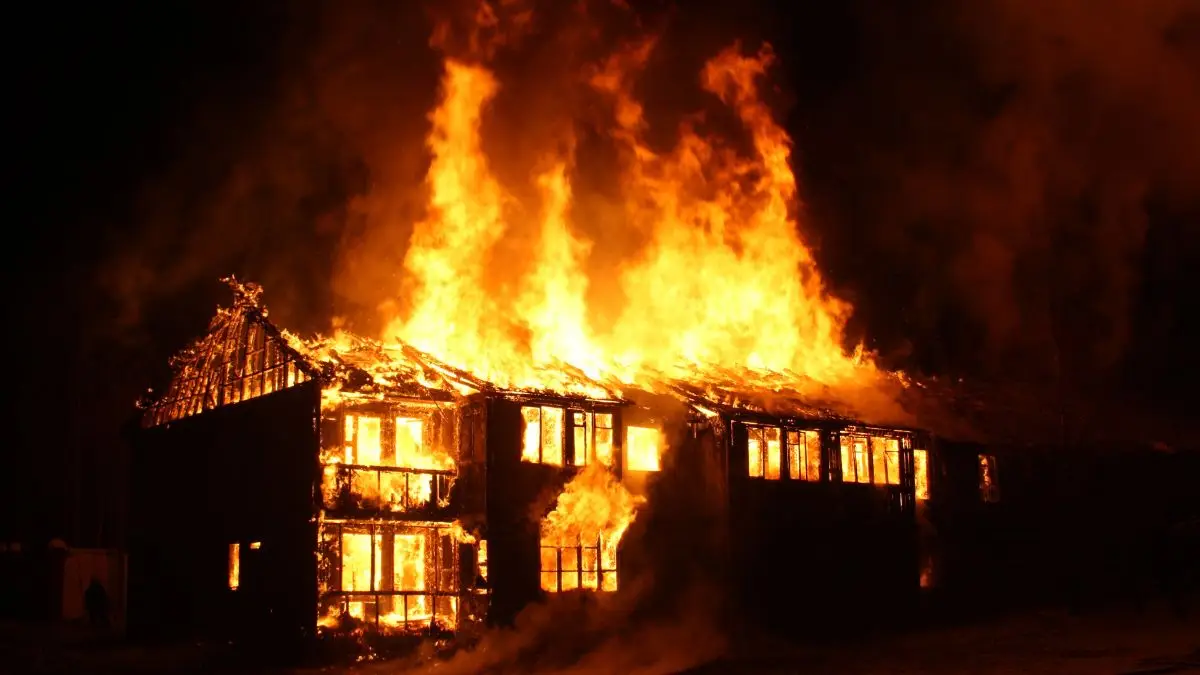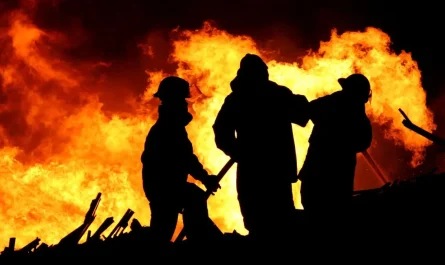Tennessee Firefighters Battle Dawn Blaze at East Lake House, Cause Under Investigation
I’ve seen too many house fire headlines to be surprised—but this one hits differently.
Early Thursday morning, just before 2 A.M., a fire ripped through a home on the 3500 block of 6th Avenue in East Lake, Tennessee. Flames broke through the roof so fast that firefighters had to pull back for their own safety. The damage? Serious. The structure? Barely holding on. And yet, somehow, no one got hurt.
That’s rare—and worth pausing on.
According to Chattanooga Fire Department, the house was empty when they got there. Police had already been knocking on doors nearby, trying to evacuate anyone at risk. Within minutes, the roof started sagging. Firefighters were forced to evacuate the home they were trying to save.
By 2:24 A.M., the fire was under control. But by then, the damage was done—and at least a few nearby residents were displaced.
We don’t have answers yet about what caused it. But we do know this: quick action by CFD and local police likely prevented a much worse outcome.
Have you ever thought about how fast a house fire can escalate? What’s your backup plan if it starts while you’re asleep? Let’s talk about that.
How It Unfolded: From a 2 A.M. Alarm to a Dangerous Collapse
I want you to picture this—it’s the middle of the night, pitch dark, and suddenly, the silence breaks with sirens echoing through East Lake.
That’s what happened just before 2 A.M. when the Chattanooga Fire Department rushed to a home on 6th Avenue. According to a report by
WDEF
, police were the first to arrive and began knocking on doors. They didn’t wait for answers—they acted fast, trying to wake up anyone nearby.
By the time firefighters got there, the flames were already pushing through the roof. I’ve covered plenty of fires, and I can tell you—when the roof starts to sag, that’s your red flag. It’s no longer just about saving the house—it’s about staying alive.
Crews started a fast attack, did a quick search, and when they confirmed no one was inside, they backed out. Just minutes later, the roof gave in. And honestly? That timing might’ve saved lives—both theirs and possibly others.
No One Was Inside—But People Are Still Hurting
Look, just because no one was physically injured doesn’t mean no one was affected.
According to
Local 3 News
, the home was unoccupied at the time of the fire. That’s a relief on paper—but it doesn’t mean the story ends there. Several nearby residents had to evacuate, and at least a few are now displaced.
Imagine waking up in the middle of the night, being told to leave your home in a rush. Not knowing if it’ll be standing when you return. That’s what some neighbors are dealing with now.
If you’ve ever known someone who’s lost a home, you know it’s not just about property—it’s your photos, your documents, your memories. Gone in minutes.
We saw something similar in a
Virginia house fire
earlier this year, where one resident lost everything and a firefighter was seriously injured while trying to help.
Why the Roof Collapse Was a Bigger Deal Than You Think?
Now let’s talk about something that doesn’t get enough attention—why firefighters had to get out when they did.
When a roof starts to collapse during a fire, it’s not just “structural damage.” It’s one of the most dangerous moments for anyone inside. Roof collapses are one of the top causes of firefighter deaths in structure fires, according to data from the NFPA.
Think about it: they’re in full gear, low visibility, navigating a burning building. And suddenly the roof gives way. That’s a death trap.
The CFD team made the right call by evacuating when they noticed sagging. That decision likely saved their own lives. As much as we admire bravery, smart, experienced decision-making is what actually prevents funerals.
If you’ve ever wondered why sometimes firefighters seem to “let it burn,” this is why. They’re trained to pull back when it’s no longer safe—and thank God they did.
I came across a fire safety update recently in a WhatsApp news thread that highlighted how fast modern roofing materials can give way. It’s one of those things that doesn’t make the news, but really sticks with you if you’ve ever seen it up close.
Still No Cause Determined—But Here’s What We Know
As of now, fire officials haven’t said what caused the blaze.
It could’ve been electrical. It could’ve started from a stove or even wiring inside the walls. But at this point, it’s all under investigation. And honestly, that can take days or even weeks—especially if the structure is too damaged to inspect safely.
What you and I need to remember is that most house fires start from the same few culprits: cooking accidents, overloaded outlets, unattended heaters. These aren’t freak events—they’re common.
So while we wait for the official word, it’s a good time to do a gut check at home. Is your smoke detector working? Have you checked your power strips lately? Prevention always feels like overkill—until it isn’t.
I’m curious—have you or someone you know ever had a close call with a fire at home? Share your experience in the comments. These stories help others realize how real—and fast—it can get.
How Firefighters Took Control — And Why Every Second Counted
You and I might think of firefighting as just blasting water from hoses, but it’s way more tactical than that. The CFD didn’t just show up and spray—they had to make quick, life-or-death decisions.
First, they launched what’s called an “interior attack,” entering the home to search and suppress the flames. But once the roof started showing signs of collapse, they didn’t hesitate—they pulled everyone out and switched to an external, defensive approach.
This isn’t hesitation—it’s experience. Every second inside a burning house with a sagging roof is borrowed time. The crews kept the fire from spreading to nearby homes and had it under control in under 30 minutes.
If you’ve ever doubted how fast fire moves, this incident is a brutal reminder. And if you’ve ever wondered how much training goes into being a firefighter—this is your answer.
Just few days before, an
Arizona home explosion
left the neighborhood shaken—another reminder that disasters don’t always come with a warning.
If This Was Your House, Would You Be Ready?
Let’s be honest—most of us don’t think it’ll ever happen to us. But if you were asleep and a fire broke out tonight, would you even hear the alarm?
This fire is a wake-up call. Literally.
Here’s what you and I can do today—simple, no-excuse actions:
-
Test your smoke alarms
(not next week—today). -
Unplug devices
you’re not using. -
Avoid charging phones overnight on your bed or couch.
-
Talk with your family
about a 2-minute exit plan. Yes, two minutes. That’s all the time you usually have.
These things sound basic, but they save lives. The difference between tragedy and a close call often comes down to tiny habits.
If this East Lake home had been occupied, the story might’ve ended very differently.
In Illinois, an
explosion killed a married couple
, showing how deadly even a small ignition source can become.
What This Fire Teaches About Home Preparedness?
Let’s go deeper on something most headlines ignored—the roof collapse.
You might not realize it, but roof failures during fires are one of the leading reasons firefighters get hurt—or worse. The National Fire Protection Association (NFPA) has warned for years that lightweight construction materials in modern homes can fail in under 10 minutes during a fire.
Think about that.
You’ve got firefighters walking underneath 2,000 pounds of burning roof beams. And the moment it gives, there’s no warning. It’s gone.
The CFD’s decision to pull out wasn’t just protocol—it was survival. And this part of the story matters because it’s the difference between a tragic headline and a clean escape.
If you’re doing any home renovations, or buying property, always ask what’s holding that roof up. Because when the fire comes, you don’t want to be guessing.
What Happens Next?
So what now?
The cause of the fire is still under investigation, and officials haven’t given a timeline yet. Sometimes it takes days, sometimes weeks—especially if the structure isn’t safe to enter.
As for the displaced residents, the American Red Cross has already stepped in, offering temporary assistance and emergency housing options. If you or someone you know needs help, they can reach out to the Southeast Tennessee chapter directly.
The burned home will likely need full structural assessment. Depending on insurance and city permits, we might see either a rebuild—or demolition—in the coming weeks.
And for the rest of us? This is a good moment to pause. To check the batteries in your detectors. To look around and ask: “If this happened here, would we be ready?”
Want more updates and expert takes on fire incidents, home safety, and housing news? Visit our
Home Incidents
section for in-depth coverage.
Disclaimer:
The information in this article is based on publicly available reports and official statements at the time of writing. Details about the fire’s cause and investigation may evolve. For the latest updates, please refer to Chattanooga Fire Department or local authorities.
Table of Contents
-
How It Unfolded: From a 2 A.M. Alarm to a Dangerous Collapse
-
No One Was Inside—But People Are Still Hurting
-
Why the Roof Collapse Was a Bigger Deal Than You Think?
-
Still No Cause Determined—But Here’s What We Know
-
How Firefighters Took Control — And Why Every Second Counted
-
If This Was Your House, Would You Be Ready?
-
What This Fire Teaches About Home Preparedness?
-
What Happens Next?




